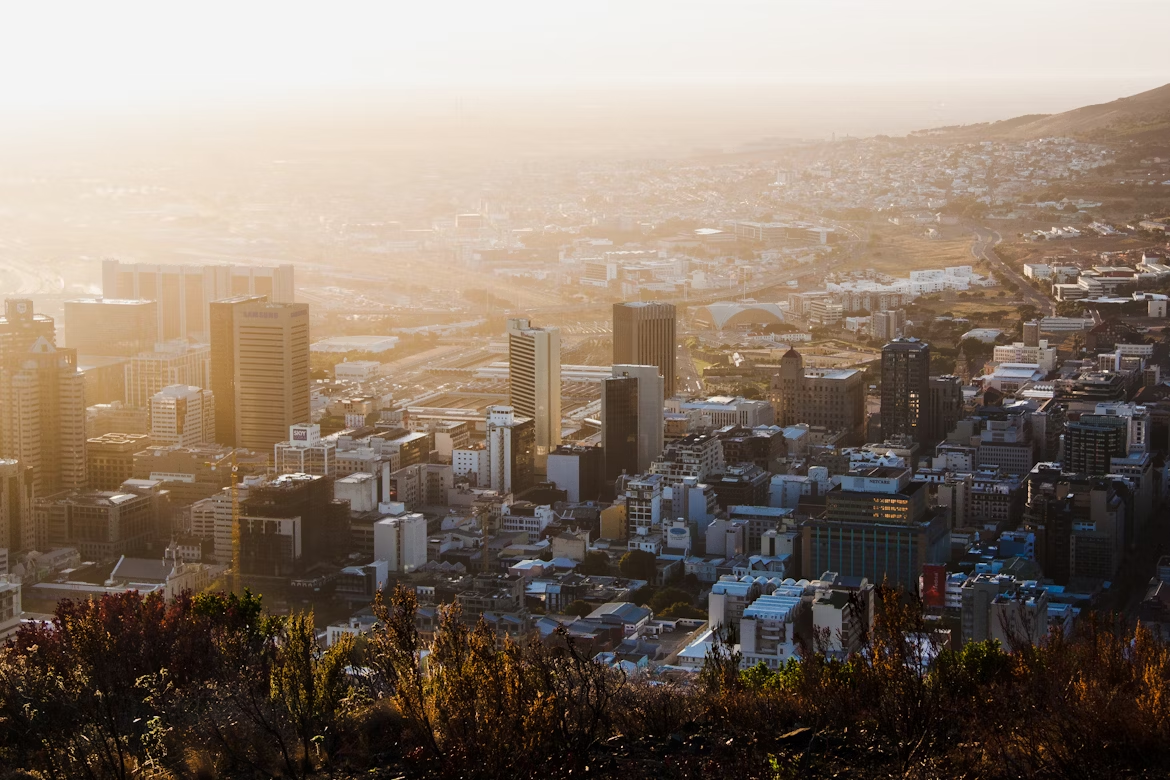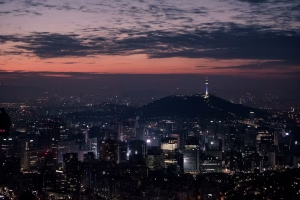The best time to visit South Africa depends largely on what you’re planning to do: go on a Big Five safari, enjoy coastal city vibes in Cape Town, or explore the famed Garden Route. Located in the Southern Hemisphere, South Africa’s seasons run opposite to those in the Northern Hemisphere, giving travelers year-round options depending on the type of adventure they seek.
This guide takes you through South Africa’s seasons, highlights the best time to spot wildlife, attend cultural festivals, or sip world-class wine in the Winelands. You’ll also learn when to book the cheapest flights and how to get the most out of your South African journey.
What is the Best Time to Visit South Africa?
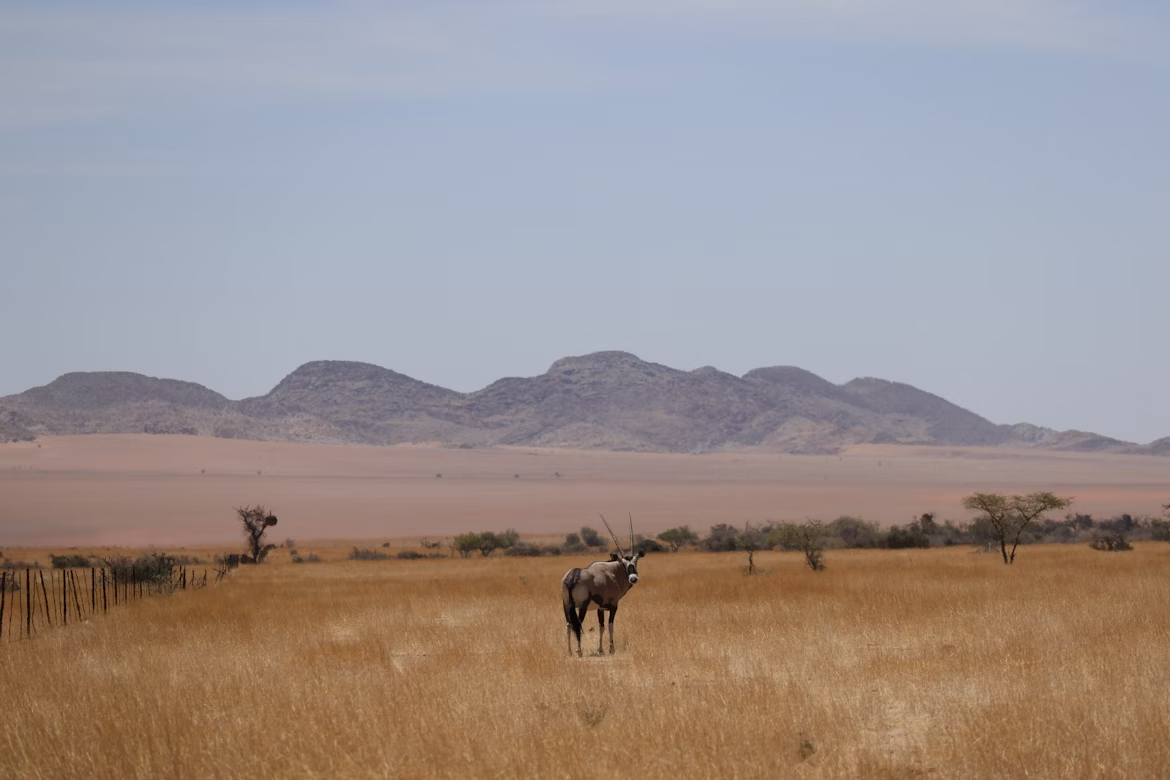
The best time to visit South Africa is from May to September and November to March, depending on your travel priorities. The dry winter months from May to September are ideal for wildlife safaris, as animals gather around water sources, making them easier to spot. Meanwhile, the warm summer season from November to March is best for beach vacations, wine tours, and vibrant cultural festivals.
June to August are the top months for visiting national parks like Kruger, while December and January are best for enjoying Cape Town, the Garden Route, and South Africa’s stunning coastline. Autumn (April–May) and spring (September–October) offer a beautiful mix of mild weather conditions in South Africa and fewer crowds, perfect for road trips and nature excursions.
|
Month |
Season |
Temperature Range (°C) |
Chance of Rain |
Month-wise Rating |
|
January |
Summer |
30.0°C – 18.0°C |
28% |
Best |
|
February |
Summer |
29.0°C – 17.0°C |
25% |
Best |
|
March |
Early Autumn |
26.0°C – 15.0°C |
22% |
Best |
|
April |
Autumn |
23.0°C – 12.0°C |
20% |
Best |
|
May |
Autumn |
20.0°C – 9.0°C |
15% |
Shoulder |
|
June |
Winter |
17.0°C – 6.0°C |
10% |
Shoulder |
|
July |
Winter |
16.0°C – 5.0°C |
8% |
Worst |
|
August |
Winter |
18.0°C – 6.0°C |
10% |
Shoulder |
|
September |
Spring |
21.0°C – 9.0°C |
12% |
Best |
|
October |
Spring |
24.0°C – 11.0°C |
15% |
Best |
|
November |
Early Summer |
27.0°C – 14.0°C |
20% |
Best |
|
December |
Summer |
29.0°C – 17.0°C |
25% |
Best |
Source: South African Weather Service and Climate-Data.org
Suggested Read: South Africa Visa for Indians
South Africa During Different Seasons
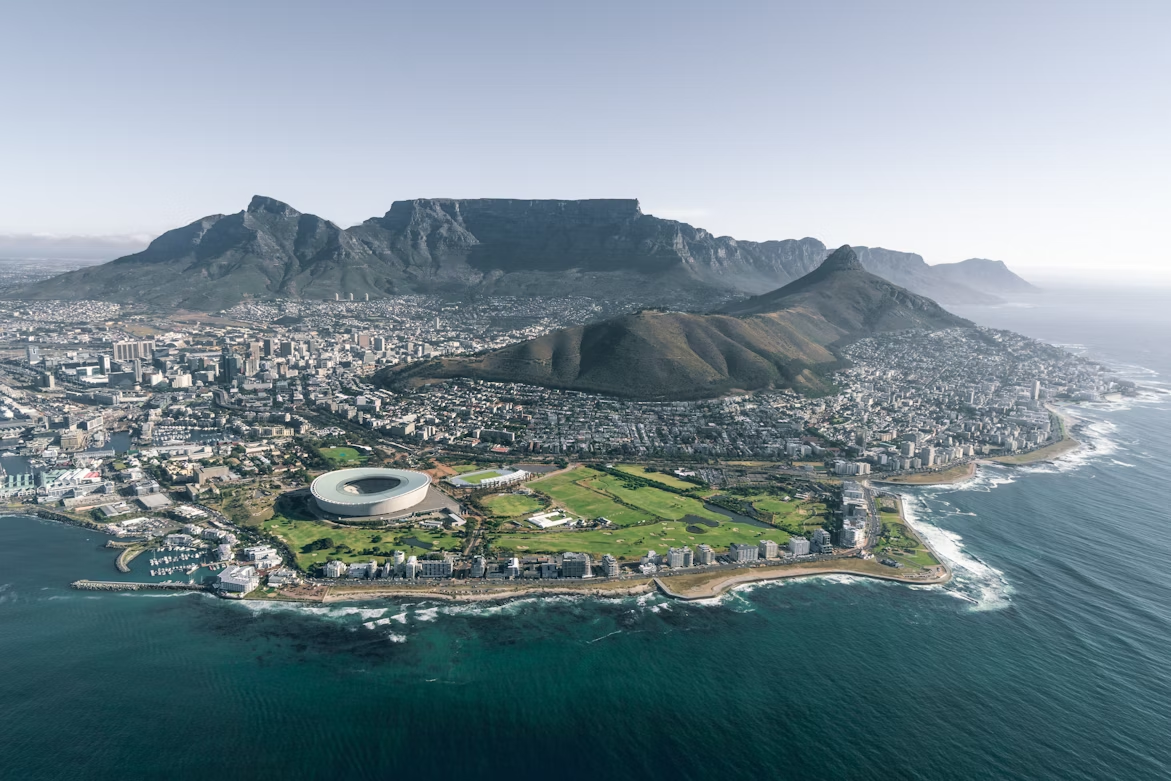
The climate in South Africa across its regions is widely variant, but its seasons are clearly defined: warm summers, mild winters, and vibrant transitions in spring and autumn. Whether you’re planning a safari, a coastal getaway, or a cultural deep-dive, understanding South Africa’s seasonal changes will help you make the most of your journey.
Winter (June to August)
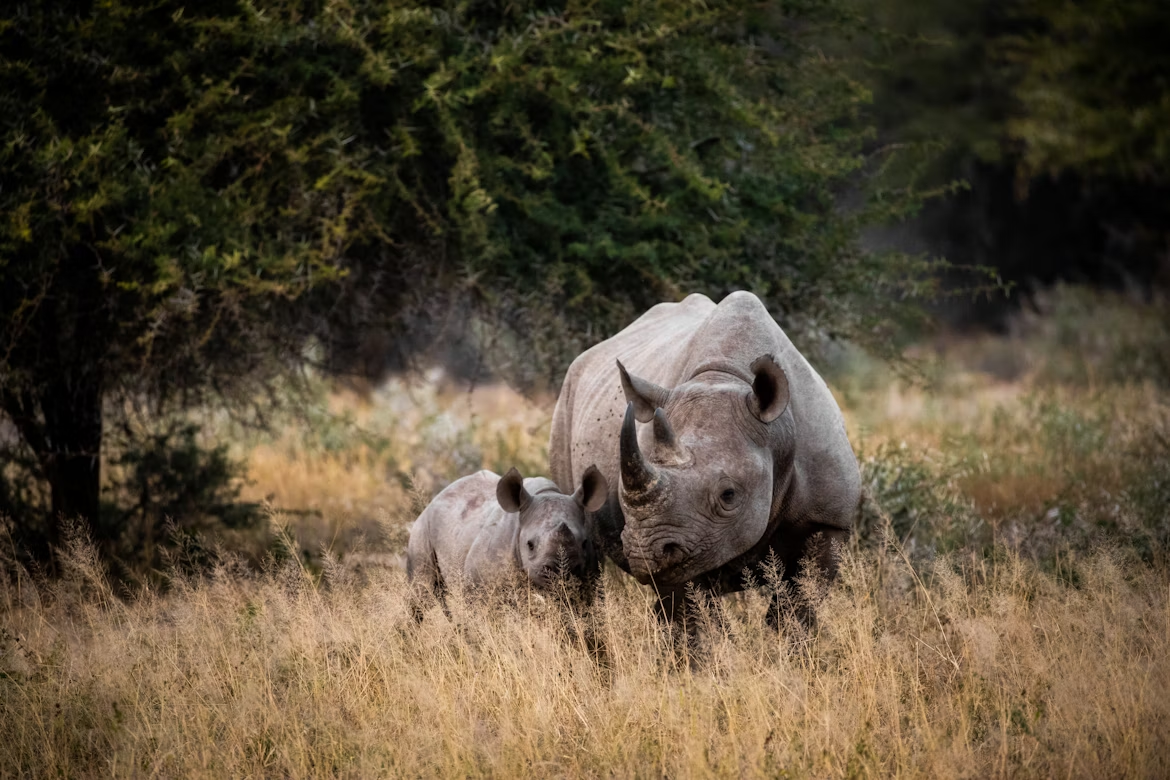
Weather: Winter in South Africa is dry, sunny, and relatively mild, especially in the north and interior regions. It’s the best time for safaris, as low vegetation and limited water sources make it easier to spot wildlife. In Cape Town and along the Garden Route, however, expect cooler temperatures and some rain.
Temperature:
- June: 17.0°C high / 6.0°C low
- July: 16.0°C high / 5.0°C low
- August: 18.0°C high / 6.0°C low
Visitor Numbers: Peak safari season draws international travelers to parks like Kruger and Madikwe. Coastal cities like Cape Town see fewer crowds, making it a good time for budget travel.
Events and Festivals:
- National Arts Festival (Makhanda/Grahamstown) – Held in July, this is Africa’s largest celebration of arts and culture, with theatre, music, and art installations.
- Knysna Oyster Festival – A winter culinary treat in the Garden Route, offering gourmet food, sports events, and family-friendly fun.
- Soweto Wine Festival – Discover black-owned wineries and South Africa’s wine culture in a unique urban setting (varies by year).
Why You Should Visit Now: Ideal for safaris, lower travel costs in Cape Town, and clear, cool days in Johannesburg and the interior. Winter sun and blue skies make for great photography.
Seasonal Dishes & Drinks:
- Bobotie: A spiced minced meat dish topped with egg custard.
- Malva pudding: A sticky, sweet dessert served warm with custard or cream.
- Rooibos tea: Naturally caffeine-free and comforting during cool weather.
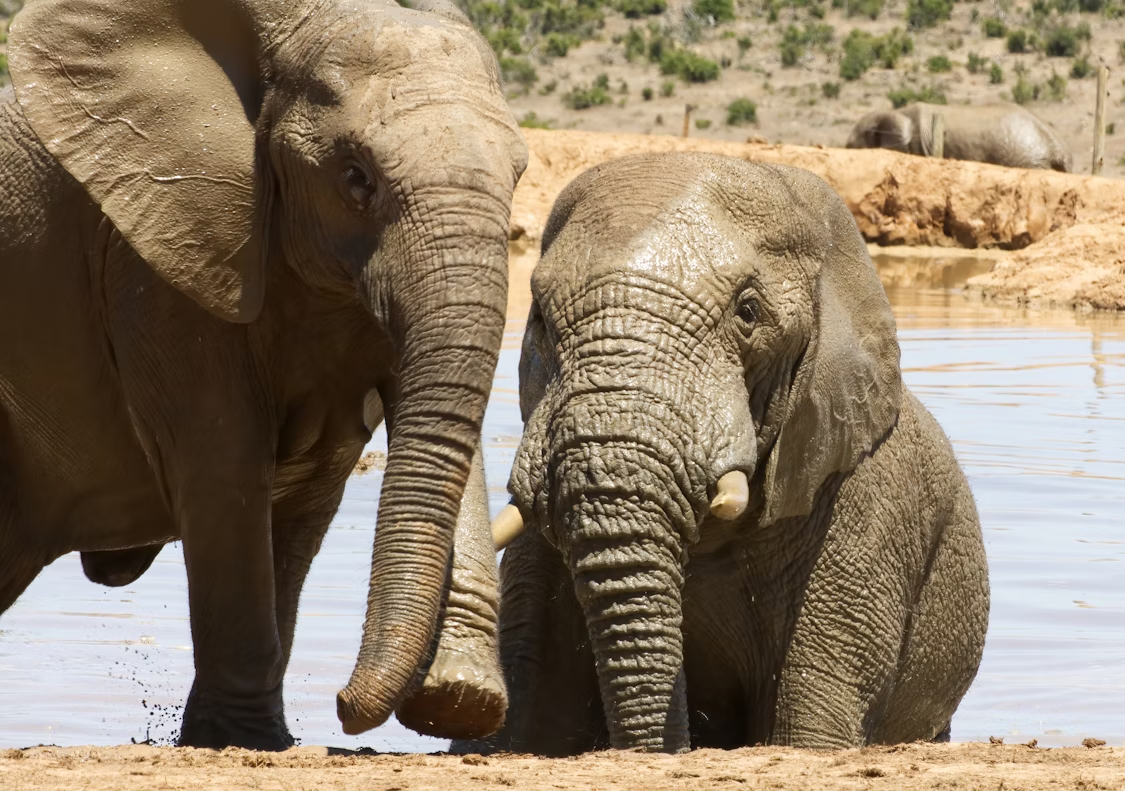
Places to Visit:
- Kruger National Park: South Africa’s premier game reserve, winter is the best time for Big Five sightings as vegetation thins out and animals gather around water sources. Early morning and late afternoon game drives are especially rewarding, with crisp air and increased wildlife activity.
- Drakensberg Mountains: This UNESCO World Heritage Site offers clear winter skies ideal for hiking, photography, and scenic drives. The mountain air is fresh, and on rare occasions, the peaks are dusted with snow, adding to the dramatic alpine beauty and making fireside lodges even more inviting.
- Addo Elephant Park: Located in the malaria-free Eastern Cape, this family-friendly park is home to over 600 elephants, lions, and black rhinos. Winter’s cool weather is perfect for self-drive safaris, and the region’s drier climate enhances your chances of spotting herds at waterholes.
- Johannesburg: The city enjoys mild, dry winters with sunny days, making it ideal for exploring its rich history through museums, art galleries, and township tours. Visit Constitution Hill or the Apartheid Museum without summer heat or crowds. Winter is also great for local food tours and shopping in Maboneng.
- Hermanus: Winter marks the start of whale watching season, with southern right whales arriving from June onward. While the main festival happens in September, the quieter winter months offer peaceful coastal trails, dramatic ocean views, and excellent vantage points for early sightings of breaching whales.
What to Pack:
- Warm layers and fleece jackets
- Comfortable closed shoes or hiking boots
- Beanie, scarf, and gloves for early morning game drives
- Moisturizer and sunscreen (dry air and high UV)
Trip Planning Considerations:
- Outdoor: Excellent for safaris and mountain hikes.
- Indoor: Ideal time for museums, wineries, and urban exploration.
Pro Tips:
- Bring binoculars and camera lenses with zoom for wildlife photography.
- Morning and evening game drives are chilly, and blankets are often provided.
- Book national park lodges and camps well in advance.
Ideal for: Wildlife lovers, photographers, outdoor adventurers, solo travelers
Suggested Read: South Africa to Ease Visa Rules for Indians
Spring (September to November)
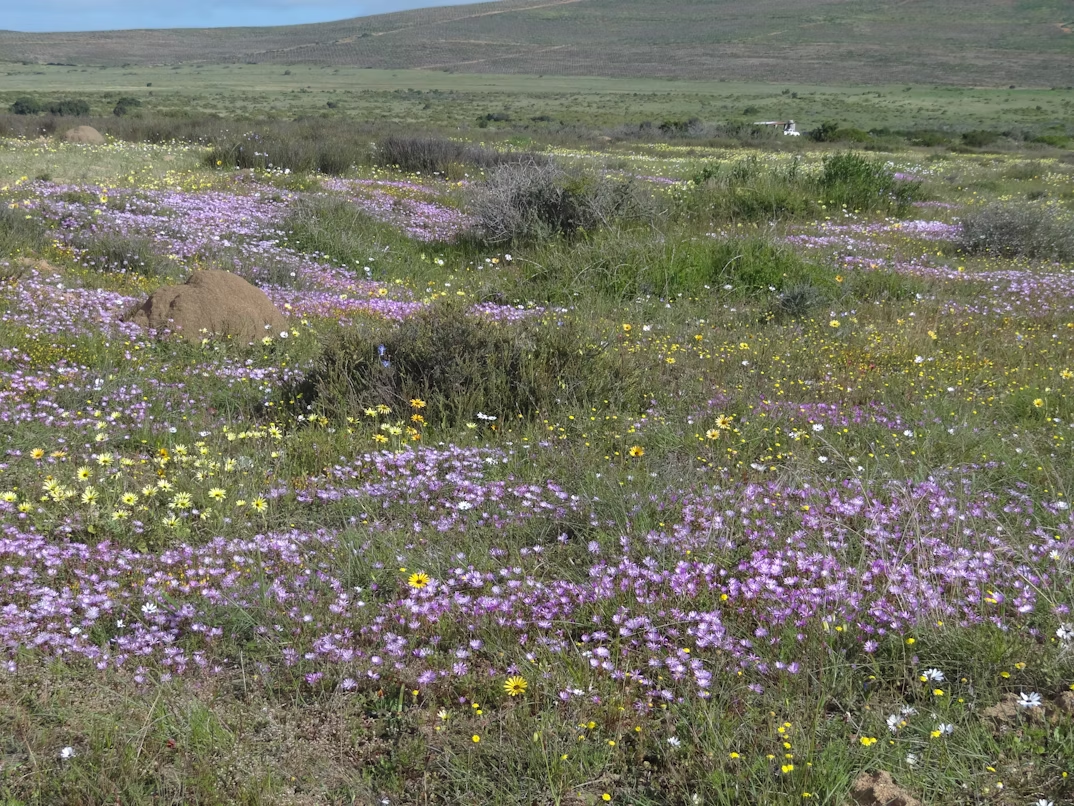
Weather: Spring in South Africa is mild, sunny, and full of color. The landscape comes alive after the dry winter, especially in the Western and Northern Cape, where wildflowers blanket the countryside. It’s also the best time for outdoor activities in South Africa, safaris, and whale watching. Rainfall is generally low, and temperatures are comfortable.
Temperature:
- September: 21.0°C high / 9.0°C low
- October: 24.0°C high / 11.0°C low
- November: 27.0°C high / 14.0°C low
Visitor Numbers: Tourist numbers begin to rise in October and November, but spring still offers fewer crowds than summer. Flower hotspots like Namaqualand get very busy during this peak tourist season in South Africa for blooms.
Events and Festivals:
- Hermanus Whale Festival (late September): South Africa’s only eco-marine festival, timed with peak whale sightings in Walker Bay. Includes live music, food stalls, and marine education.
- Cape Town International Kite Festival (October): A colorful event perfect for families, held in Muizenberg.
- Jacaranda Season in Pretoria: In October, the city turns purple as over 70,000 jacaranda trees bloom, perfect for scenic walks and photography.
- Worcester Wildflower Show (September): A stunning indoor display of the Cape’s indigenous flora.
Why You Should Visit Now: Perfect for scenic drives, whale watching, nature photography, and experiencing South Africa’s floral diversity. The weather is ideal across most regions, and attractions are still relatively uncrowded.
Seasonal Dishes & Drinks:
- Braaivleis (barbecue): Spring kicks off braai season across the country.
- Boerewors rolls: Grilled sausage rolls are popular at outdoor events.
- Savanna Dry: Crisp apple cider, perfect for sunny afternoons.

Places to Visit:
- Namaqualand: One of the world’s most spectacular spring flower destinations, Namaqualand transforms into a vivid sea of daisies, succulents, and wildflowers from late August to early October. Located in the Northern Cape, this arid region explodes with color after winter rains. For the best displays, drive the Flower Route or visit Skilpad Wildflower Reserve.
- Hermanus: Spring marks peak whale season in Hermanus, where southern right whales can be spotted breaching and tail-slapping just meters from the cliffs. The Whale Festival in late September draws crowds, but even a quiet morning stroll along the Cliff Path offers unforgettable sightings.
- Kirstenbosch National Botanical Garden: Nestled at the foot of Table Mountain, Kirstenbosch comes alive in spring with vibrant proteas, pincushions, and ericas. The garden’s themed sections and mountain backdrops create a photographer’s dream. It’s also the perfect spot for a picnic or a leisurely walk among blooming indigenous flora.
- Garden Route: Spring is a prime time for scenic road trips along this iconic coastal stretch. Nature reserves like Tsitsikamma and Wilderness are lush with greenery, waterfalls are full from winter rains, and hiking trails are vibrant with blooming fynbos. Birdlife is also active, making it a great time for nature enthusiasts.
- Pretoria: Visit in mid-to-late October to witness the city’s famous jacaranda trees in full bloom. Streets, especially around the University of Pretoria, turn into a purple canopy, creating postcard-worthy scenes. It’s a unique urban spring experience and a favorite among photographers and locals alike.
What to Pack:
- Light layers and a sunhat
- Windbreaker or light jacket for cooler evenings
- Sunglasses and SPF 30+ sunscreen
- Reusable water bottle and walking shoes
Trip Planning Considerations:
- Outdoor: Great for wildflower viewing, whale watching, picnics, and garden tours.
- Indoor: Cultural centers, art museums, and botanical gardens.
Pro Tips:
- Book accommodations early if visiting during the Namaqualand flower season.
- Check local bloom forecasts; timing varies slightly each year depending on rainfall.
- Use the coastal boardwalks in Hermanus for safe and scenic whale watching.
Ideal for: Couples, families, nature lovers, road trippers, flower enthusiasts
Suggested Read: South Africa Famous Food
Summer (December to February)
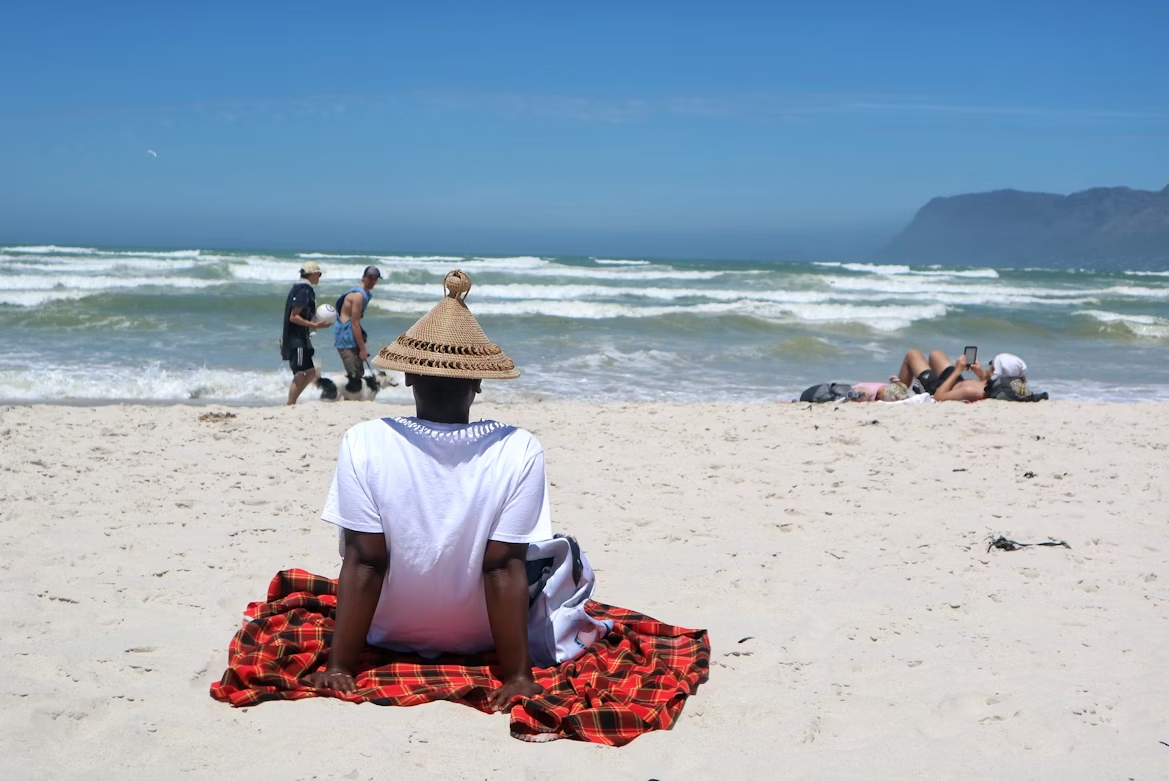
Weather: Summer in South Africa is hot, sunny, and vibrant, especially in the coastal and southern regions. Cape Town, the Garden Route, and Durban enjoy long days perfect for beach vacations, wine tasting, and outdoor festivals. The north and interior (like Kruger) may experience brief afternoon thunderstorms but remain mostly sunny.
Temperature:
- December: 29.0°C high / 17.0°C low
- January: 30.0°C high / 18.0°C low
- February: 29.0°C high / 17.0°C low
Visitor Numbers: This is peak tourist season, especially during the Christmas and New Year holidays. Expect crowded beaches, busy wine estates, and higher accommodation rates. Local schools also close for summer, increasing domestic travel.
Events and Festivals:
- Cape Minstrel Carnival (Kaapse Klopse) – Held on January 2 in Cape Town, this colorful parade features music, dancing, and traditional minstrel troupes.
- New Year’s Eve Fireworks (V&A Waterfront) – A massive celebration with concerts, food stalls, and midnight fireworks.
- Up the Creek Music Festival – A laid-back riverside music festival held in February near Swellendam.
- Durban Summer Festival – A beachfront celebration with water sports, live performances, and food.
Why You Should Visit Now: If you’re into beaches, festivals, vineyards, and lively city energy, this is the best time to visit South Africa’s coast and wine regions. The days are long and perfect for road trips or al fresco dining.
Seasonal Dishes & Drinks:
- Gatsby sandwich: A giant sub filled with meat, fries, and sauce, perfect beach food in Cape Town.
- Chakalaka and pap: A spicy summer side dish often served at braais.
- Rosé wine and chilled Sauvignon Blanc: Perfect companions for hot afternoons.
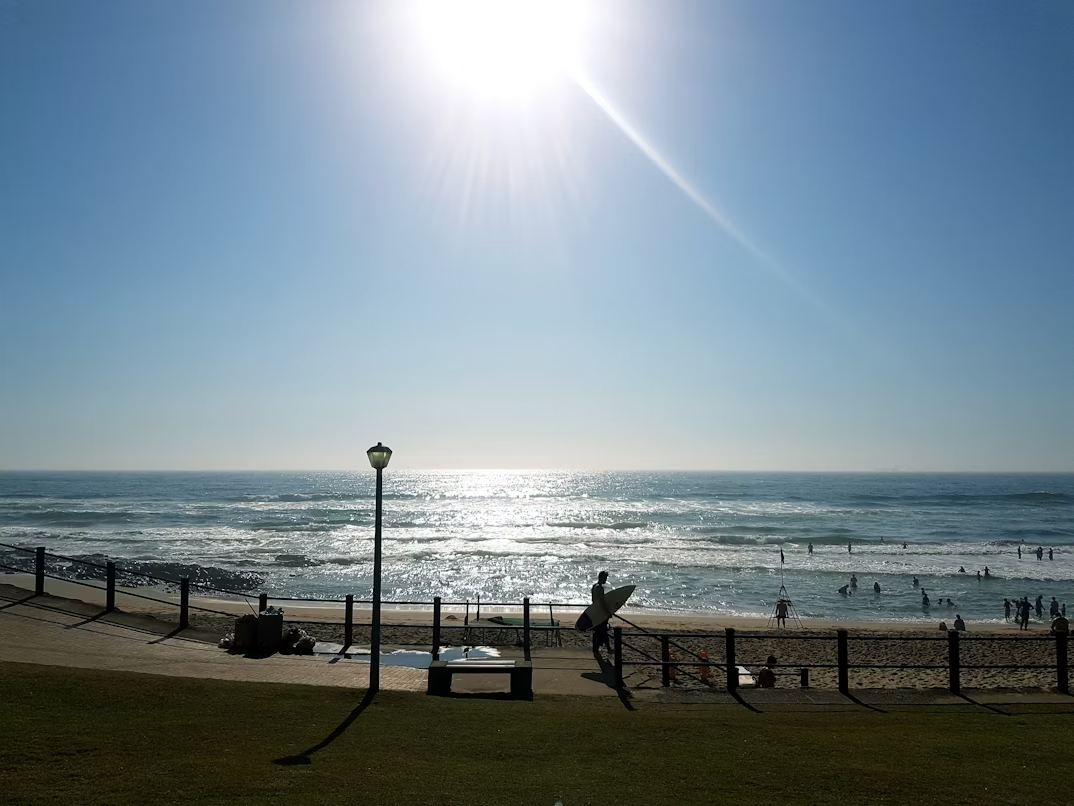
Places to Visit:
- Cape Town: Summer in Cape Town is all about sunshine, ocean breezes, and long golden sunsets. Hike Table Mountain or take the cable car for panoramic views, explore Robben Island to dive into South Africa’s history, or unwind on Clifton Beach with soft sand and turquoise waters. Don’t miss the sunset from Signal Hill or Camps Bay—both perfect for a romantic picnic or evening photos.
- Garden Route: This iconic stretch between Mossel Bay and Storms River offers lush forests, dramatic coastlines, and charming towns. Go lagoon swimming in Knysna, zip-lining in the treetops, or kayak through rivers and gorges in Tsitsikamma National Park. Summer is ideal for road trips, as the route is dotted with craft markets, farm stalls, and hiking trails.
- Durban: With its subtropical climate and warm Indian Ocean waters, Durban is a hotspot for surfing, snorkeling, and beachfront walks. Explore uShaka Marine World, try spicy local street food like bunny chow, or relax along the Golden Mile. Summer festivals and beachfront concerts make it lively and family-friendly.
- Cape Winelands: Stellenbosch, Franschhoek, and Paarl are stunning in summer, with vineyards in full bloom and wine estates hosting live music, gourmet picnics, and tastings. Take a wine tram tour, explore historic towns, or dine al fresco with a view of rolling hills and vineyard valleys.
- Addo Elephant Park: Though summer brings thicker vegetation, Addo is still excellent for wildlife, especially elephants, zebras, and warthogs. Located in the malaria-free Eastern Cape, it’s less crowded than Kruger during the festive season and perfect for self-drive safaris combined with coastal getaways to Port Elizabeth.
What to Pack:
- Lightweight clothes, swimsuits, and sun hats
- Reef-safe sunscreen and after-sun lotion
- Flip-flops, sandals, or breathable walking shoes
- Reusable water bottle and beach towel
Trip Planning Considerations:
- Outdoor: Beaches, national parks, vineyards, festivals, and open-air markets.
- Indoor: Museums, wine cellars, and historical sites (perfect during the midday heat).
Pro Tips:
- Book early, hotels and flights fill up quickly over Christmas/New Year.
- Beat crowds by visiting popular beaches early in the morning or mid-week.
- Stay hydrated, carry water on hikes or city tours.
Ideal for: Beachgoers, families, foodies, wine lovers, festival enthusiasts
Suggested Read: Explore the Most Beautiful Lakes in South Africa
Autumn (March to May)
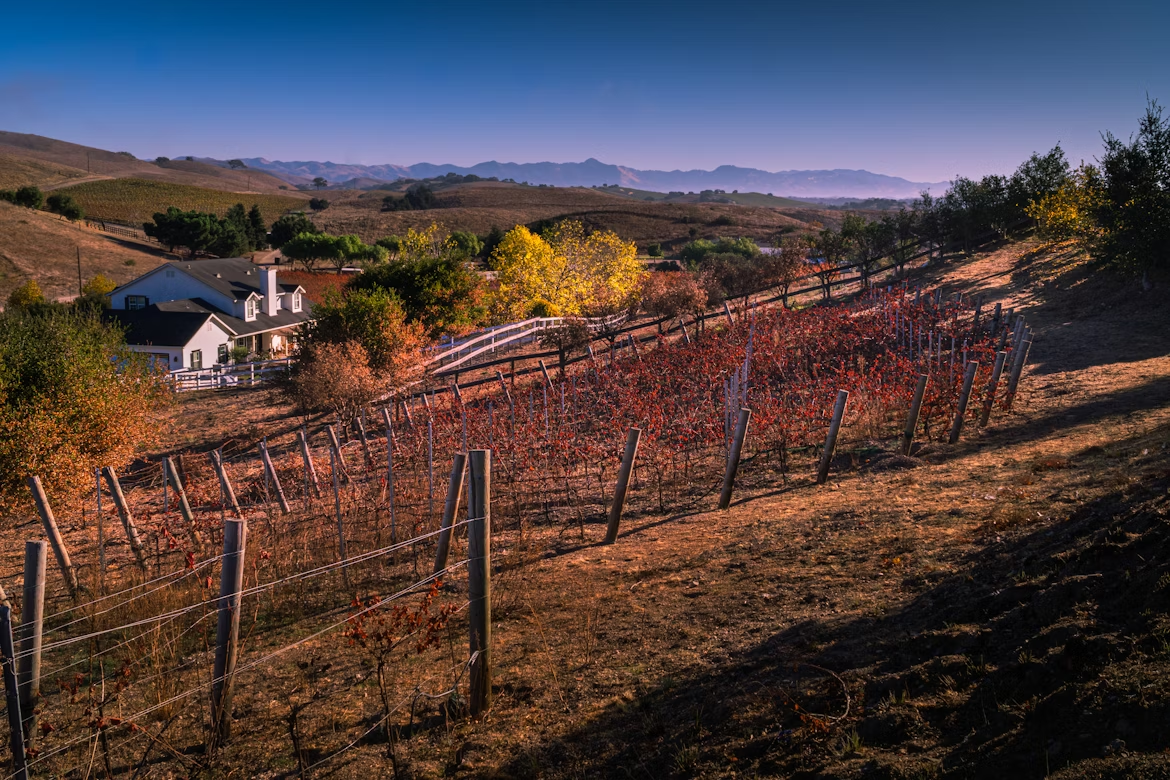
Weather: Autumn in South Africa is warm and calm, with gradually cooling temperatures and fewer crowds. The summer rains begin to fade in the northeast, while Cape Town enjoys dry, golden days. This shoulder season is ideal for travelers seeking mild weather, great wildlife viewing, and harvest-time charm in the Winelands.
Temperature:
- March: 26.0°C high / 15.0°C low
- April: 23.0°C high / 12.0°C low
- May: 20.0°C high / 9.0°C low
Visitor Numbers: After the busy summer months, March to May sees a drop in tourist traffic, especially in cities and along the coast. Safari parks start preparing for the dry winter season, offering a quieter and still fruitful wildlife experience.
Events and Festivals:
- Cape Town Carnival (March): A colorful celebration of African culture, with vibrant floats, music, and dance through the streets of Green Point.
- AfrikaBurn (late April): South Africa’s version of Burning Man, held in the Tankwa Karoo desert, is an unforgettable artistic and communal experience.
- Franschhoek Uncorked Festival (May): Celebrate harvest season with wine tastings, food pairings, and cellar tours in the Cape Winelands.
- Autumn Garden Shows: Held in botanical gardens like Walter Sisulu and Kirstenbosch.
Why You Should Visit Now: South Africa’s autumn offers the best of both worlds, fading summer warmth with fewer tourists and lower travel costs. It’s a superb time for vineyard visits, wildlife watching, and scenic road trips across varied landscapes.
Seasonal Dishes & Drinks:
- Potjiekos: A hearty stew made in a cast-iron pot over a fire, perfect for cooler evenings.
- Biltong: A South African dried meat snack, ideal for hikes or game drives.
- Pinotage: South Africa’s signature red wine, full-bodied and great with autumn dishes.
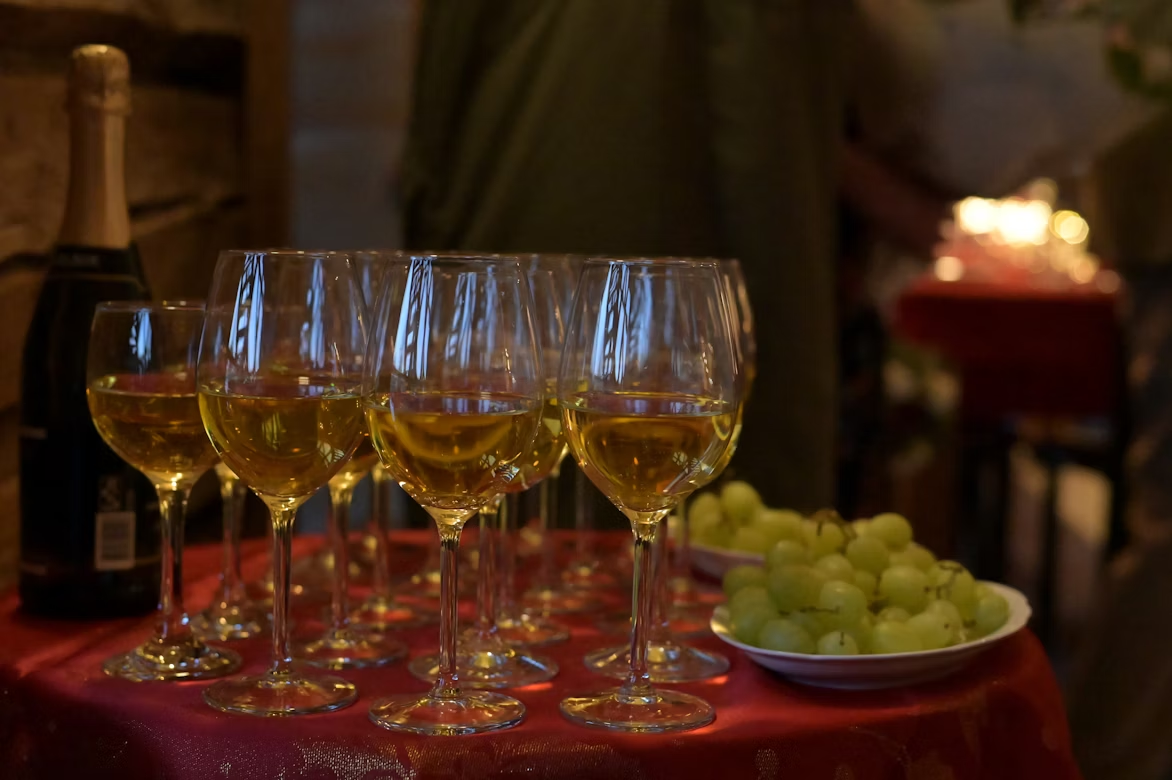
Places to Visit:
- Franschhoek and Stellenbosch: Autumn is grape harvest season in the Cape Winelands, making it the best time for wine tastings, cellar tours, and vineyard picnics. It’s a photographer’s dream and a romantic escape for couples looking to savor the season.
- Kruger National Park: As the wet season fades, the bush begins to thin out, offering improved visibility of the Big Five. Daytime temperatures are still warm and comfortable, while evenings are cooler, perfect for sunset game drives.
- Cederberg Mountains: Just a few hours from Cape Town, the Cederberg region is ideal for autumn hiking among red sandstone formations, crisp mountain air, and golden-hued valleys. Visit to see ancient San rock art, scenic wilderness trails, and starlit skies in this peaceful, off-the-beaten-path area.
- Johannesburg: As leaves begin to change, Joburg’s urban parks like Emmarentia Dam and Zoo Lake turn into tranquil picnic spots. The city also comes alive with street markets, art walks, and local food festivals, giving travelers a chance to engage with the creative side of South Africa’s largest metropolis.
- Clarens: Nestled in the foothills of the Maluti Mountains in the Free State, Clarens is a small town celebrated for its charming galleries, craft shops, and golden autumn landscapes. It’s a peaceful spot for a weekend retreat, especially popular with artists, photographers, and those seeking fresh mountain air and cozy cafes.
What to Pack:
- Light layers for warm days and cool evenings
- A warm hoodie or light jacket
- Closed walking shoes and a sunhat
- Reusable coffee cup and eco-friendly tote for local markets
Trip Planning Considerations:
- Outdoor: Ideal time for road trips, game drives, and Winelands exploration.
- Indoor: Wine cellars, art galleries, local museums, and cozy cafés.
Pro Tips:
- Make restaurant and winery bookings in advance, harvest season can draw local foodies.
- Game drives are more comfortable temperature-wise, with no early morning chill or midday heat.
- Bring a camera, autumn colors in the Winelands are stunning.
Ideal for: Wine lovers, foodies, road trippers, photographers, off-season travelers
Suggested Read: Best Beaches in South Africa
Shoulder Season in South Africa
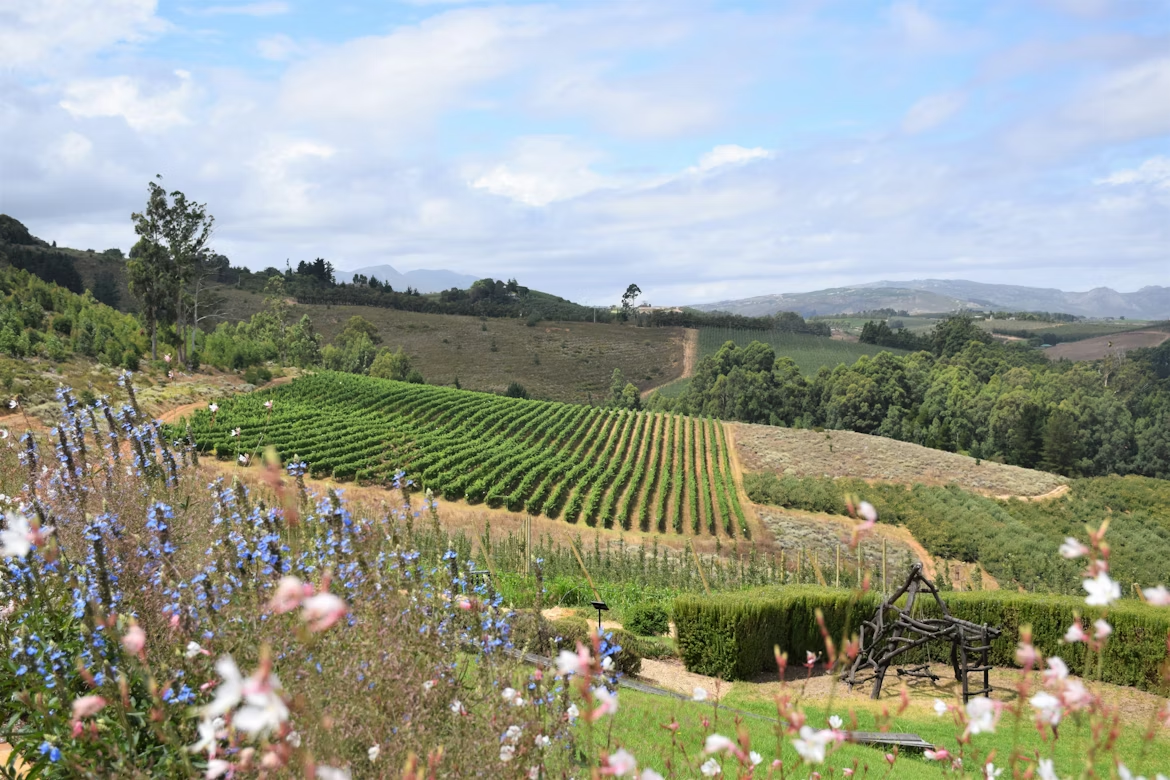
The best shoulder seasons in South Africa are March to May (autumn) and September to early November (spring). These periods offer a sweet spot between extreme summer heat and winter chill, providing ideal conditions for road trips, wildlife safaris, and wine country tours, without the peak-season crowds or inflated prices.
Pros of going to South Africa during the shoulder season:
- Best months for sightseeing in South Africa
- Affordable domestic flights and hotel rates, especially in the Winelands and coastal areas
- Excellent wildlife visibility as the bush starts thinning (autumn) or animals stay active after winter (spring)
- Blooming wildflowers and whale watching (in spring)
- Wine harvest festivals and fewer lines at major attractions
Cons of going to South Africa during the shoulder season:
- Namaqualand wildflower season is unpredictable and varies by year (August to early October)
- Rain showers may still occur in spring, especially in Cape Town
- Evenings can be chilly, especially in higher-altitude regions like the Drakensberg
- Events like AfrikaBurn may increase local demand for accommodation in nearby areas
Suggested Read: Historical South Africa Monuments
Cheapest Time to Visit South Africa

The most budget-friendly months to visit South Africa are during the low season in June to August (winter) and the shoulder season in May or early September. Although you’ll need to prepare for cooler temperatures, these months bring great deals on airfare, accommodations, and car rentals, especially outside of safari lodges.
Budget Tips:
- Use budget airlines for domestic travel; routes between Johannesburg, Durban, and Cape Town are often discounted
- Book safari packages or national park stays well in advance for off-season travel to South Africa
- Take advantage of Cape Town’s winter food and wine specials offered by restaurants and vineyards
- Consider self-driving the Garden Route for a scenic, cost-effective adventure
- Use local e-hailing services or minibus taxis to save on transport within cities
Suggested Read: Spring in South Africa
Challenging Seasons for South Africa Travel
While South Africa is a year-round destination, certain periods come with more travel challenges. These include the holiday-heavy summer peak (mid-December to early January) and parts of winter in high-altitude or coastal areas where the weather can be unpredictable or limiting.
Holiday Peak (Mid-December to Early January)
South Africa’s festive season brings crowds, inflated prices, and booked-out accommodations. Coastal cities like Cape Town, Durban, and Port Elizabeth become extremely busy as locals and international tourists flock to the beaches. National parks also see heavy footfall, especially during Christmas and New Year.
Rainy Summer Season in the Northeast
Regions like Kruger National Park and Limpopo receive afternoon thunderstorms during the summer months (November–February), which can disrupt safaris. Roads may be muddy, and some animals become harder to spot in the lush foliage.
Cold and Rainy Winters in Cape Town
While the interior stays sunny, Cape Town’s winter (June–August) can bring frequent rain and cool winds. Outdoor activities like hiking or beach visits may be affected, though there are plenty of indoor attractions.
Public Holidays and Long Weekends
Major holidays like Easter, Heritage Day (September 24), and Human Rights Day (March 21) can lead to short bursts of domestic travel, which affect road traffic, accommodation availability, and park capacity. Planning ahead is key if your trip coincides with these dates.
Why You Might Avoid These Periods:
- High costs and overcrowded destinations during the December–January school holidays
- Humid and stormy weather in the northeast during summer
- Reduced visibility on safaris due to dense vegetation in rainy months
- Closed businesses or limited transport during national holidays
Who Should Avoid It: First-time visitors, families with toddlers, older travelers with mobility concerns, or anyone seeking a laid-back experience without large crowds.
Suggested Read: Winter in South Africa


FAQs
1. When is the best time to visit South Africa?
The best time to visit South Africa depends on what you want to experience. For safaris, the dry winter months from May to September offer excellent wildlife viewing in places like
Kruger National Park. If you’re visiting for beaches and wine tasting, the warm summer season from November to March is ideal. For a balanced experience with fewer crowds and mild weather, spring (September–November) and autumn (March–May) are perfect shoulder seasons.
2. When to visit South Africa for fewer crowds?
To enjoy South Africa with fewer tourists, travel during the shoulder seasons, March to May or September to early November. These months fall between the summer holiday rush and winter safari peak, giving you quieter beaches, uncrowded wine estates, and more relaxed game drives.
3. When to find the best deals in South Africa?
The best time to find travel deals in South Africa is during the low season (June to August) and early spring (September). These months bring discounts on flights, hotels, and safari packages, especially if you book in advance. Cape Town also offers excellent winter specials on dining and wine tours during these off-peak months.
4. What’s the best month for a South Africa safari?
August and September are considered the best months for safaris in South Africa. The bush is dry, making animals easier to spot around waterholes, and the weather is pleasant, cool in the mornings and warm in the afternoons. Game drives during these months offer high visibility and rewarding wildlife encounters.
5. Is December a good time to visit South Africa?
December can be a great time to visit coastal regions like Cape Town, the Garden Route, and Durban, thanks to sunny beach weather and a festive atmosphere. However, it’s also peak tourist season, especially from mid-December to early January. Expect high prices, busy roads, and booked-out accommodations during the South African school holidays.
6. When is the best time for wine tasting in South Africa?
The autumn harvest season from March to May is ideal for wine tasting in the Cape Winelands. Vineyards in Stellenbosch and Franschhoek are vibrant with fall colors, and many offer harvest festivals, cellar tours, and food pairings during this time.
7. What time of year can you see whales in South Africa?
June to November is the best time for whale watching in South Africa. Southern right whales migrate along the coast and are easily seen from land in places like Hermanus, especially during the Hermanus Whale Festival in late September.
8. Is summer (December–February) a good time to travel to South Africa?
Yes, summer is the best time to visit South Africa for beach lovers, festival-goers, and outdoor explorers. You’ll enjoy long sunny days in Cape Town, scenic coastal drives along the Garden Route, and plenty of cultural events. Just be prepared for higher prices and busier attractions, especially around Christmas and New Year.





